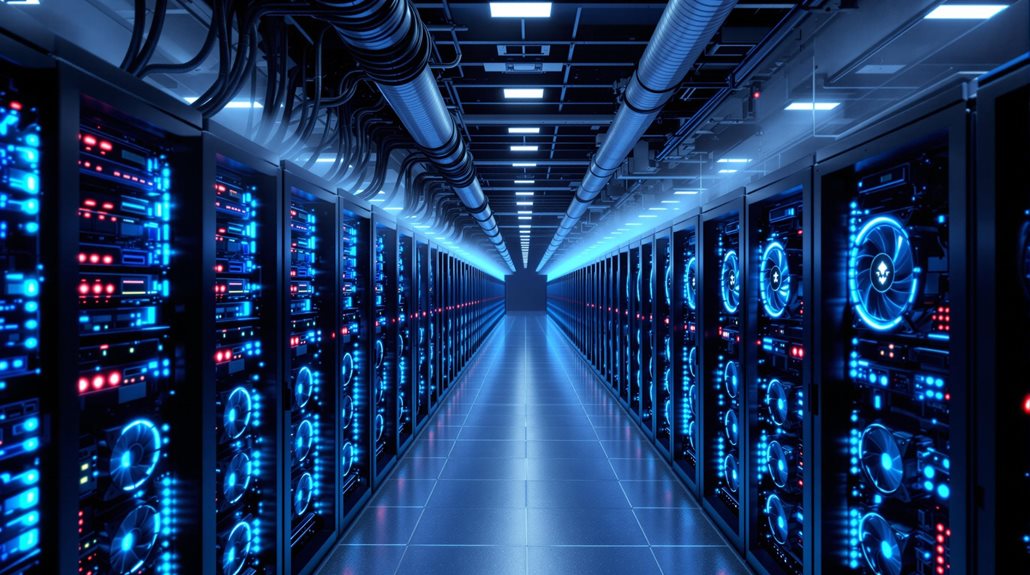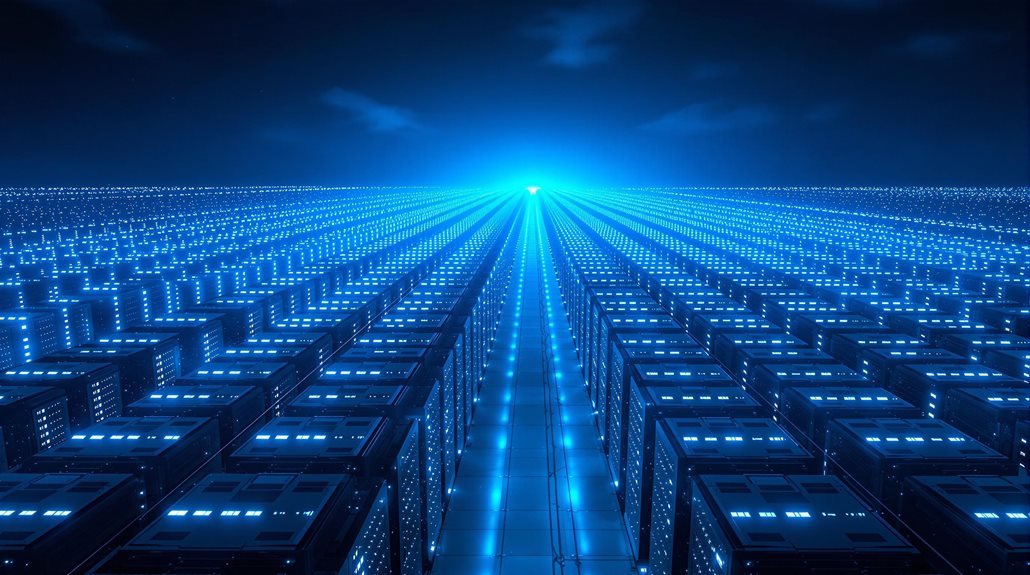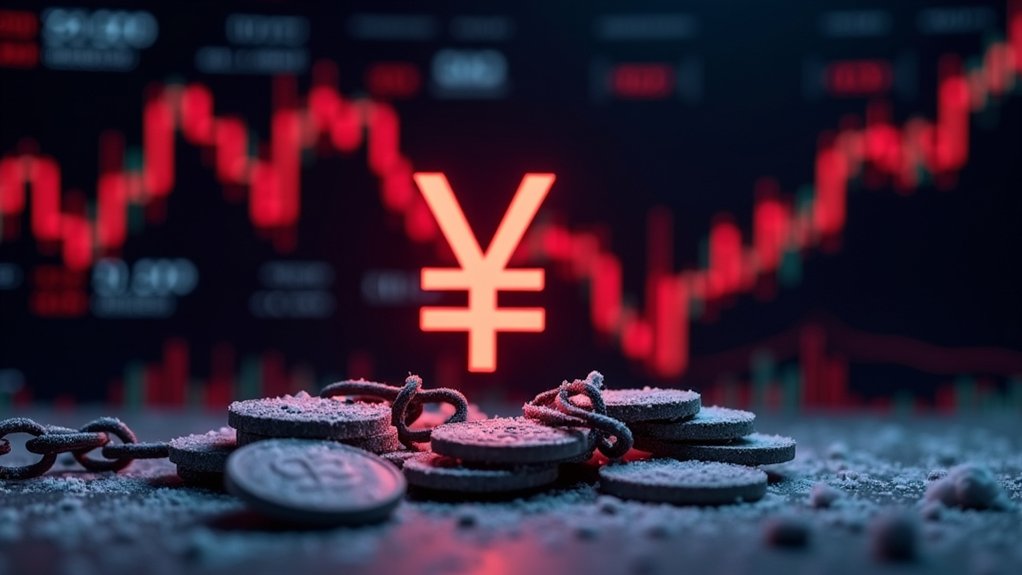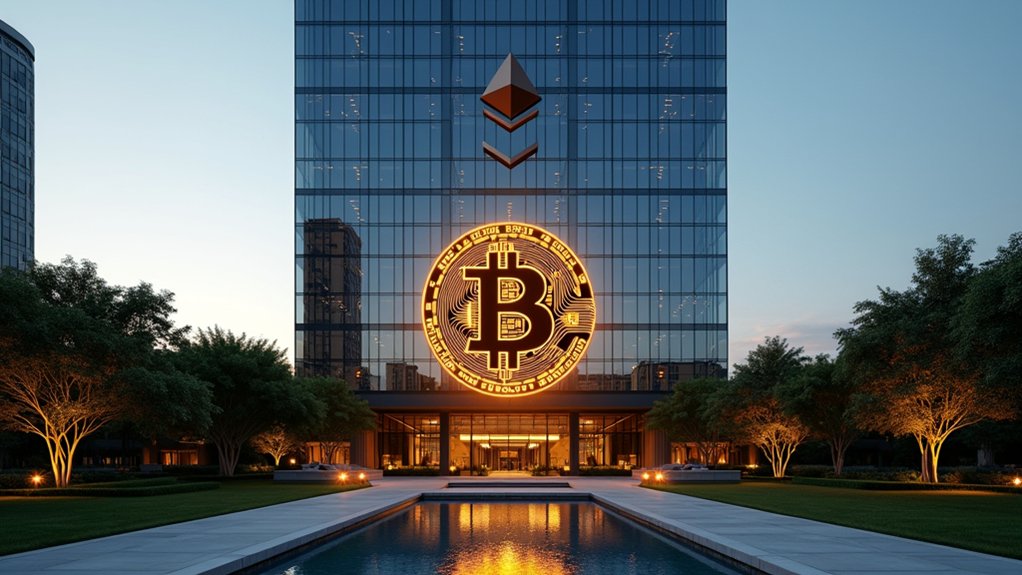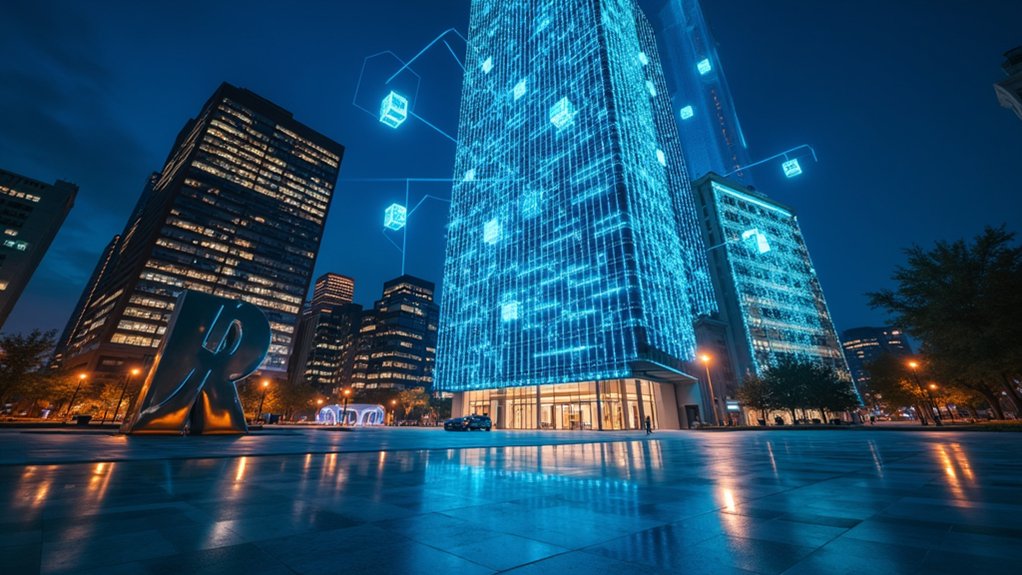Bitcoin mining uses powerful computers to solve complex math puzzles that verify transactions on the network. Miners bundle pending transactions into blocks and compete to find a special number called a nonce. When successful, they earn newly created bitcoins and transaction fees as rewards. While early mining used regular computers, today’s miners use specialized equipment like ASICs and often join mining pools to increase their chances. There’s much more to discover about this fascinating process.
Quick Overview
- Miners collect pending transactions and bundle them into blocks while competing to solve complex mathematical puzzles using specialized hardware.
- The mining process requires powerful ASIC machines to calculate SHA-256 hashes until finding one below the network’s target difficulty.
- Successful miners receive both block rewards (currently 6.25 bitcoins) and transaction fees as compensation for securing the network.
- Mining pools allow multiple miners to combine computing power and share rewards, providing more consistent income than mining alone.
- The network automatically adjusts mining difficulty every 2016 blocks to maintain a steady 10-minute average block creation time.
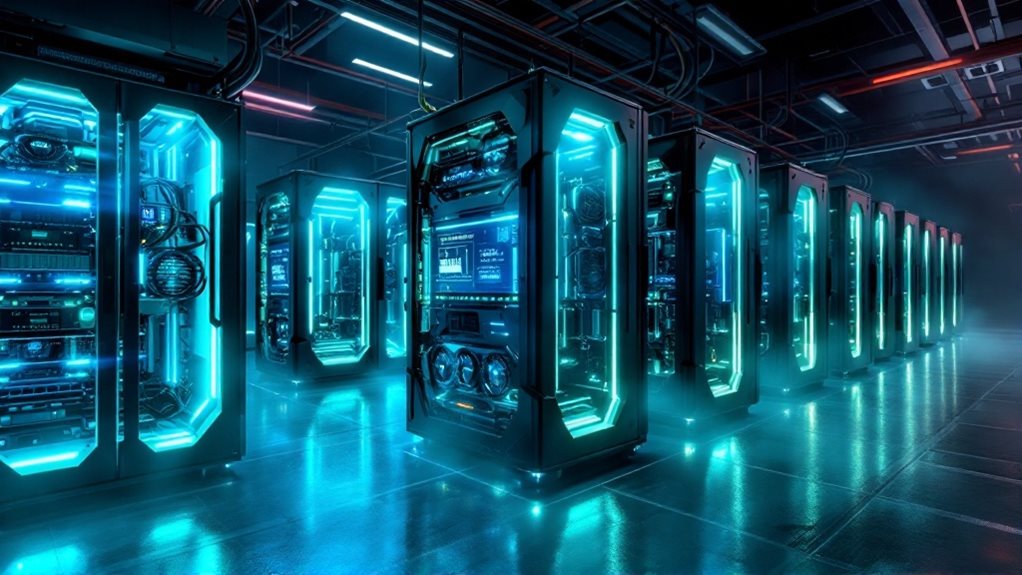
Bitcoin mining powers the cryptocurrency’s network through a complex digital process. It all starts when miners gather pending transactions from what’s called the mempool. These transactions are then bundled together into a new block, and miners calculate something called a Merkle root by using special hashing techniques. To add this block to the blockchain, miners must solve a challenging puzzle called Proof of Work by finding the right number, known as a nonce. Eventually, mining will stop once the total supply of 21 million bitcoins is reached.
The mining process has evolved considerably since Bitcoin’s early days. Initially, people could mine using regular computer processors (CPUs), but that’s no longer practical. Miners now use specialized equipment like GPUs, FPGAs, and ASICs, which are much more efficient at solving the mining puzzles. They also use special mining software to run this hardware. Many miners join forces in mining pools, combining their computing power to increase their chances of earning rewards. The collaborative approach through mining pools helps distribute risks and provides more stable income for participants. Popular software like Nicehash makes it easier for beginners to start mining cryptocurrencies.
The security of Bitcoin mining relies on a cryptographic system using the SHA-256 hashing algorithm. Each block gets a unique 64-digit hexadecimal hash, and miners compete to find a hash that’s below a target set by the network. The network automatically adjusts the mining difficulty every 2016 blocks to keep the average time between new blocks at about 10 minutes. When miners successfully solve the puzzle, they can add their block to the blockchain and receive their reward. Even minor changes to the input data create completely different hash values during mining.
The economic rewards of Bitcoin mining follow a predetermined schedule. The block reward, which started at 50 bitcoins, cuts in half approximately every four years. As of 2024, miners receive 6.25 bitcoins for each block they successfully mine. They also collect transaction fees from the users who want their transactions included in the block. However, mining isn’t always profitable – it depends heavily on factors like electricity costs and the current price of bitcoin.
The mining process gets more challenging as more miners join the network. This increased competition means miners need more powerful equipment to stay competitive. The network’s difficulty adjustment guarantees that blocks continue to be mined at a steady rate, regardless of how many miners are participating or how powerful their equipment becomes.
This self-regulating system helps maintain Bitcoin’s stability and security while guaranteeing new bitcoins are released into circulation at a predictable rate.
Frequently Asked Questions
What Happens if I Lose My Bitcoin Wallet Password?
If someone loses their Bitcoin wallet password, they can’t access their funds.
It’s like losing the keys to a high-security vault – there’s no way to get inside. Unlike regular bank accounts, there’s no “forgot password” button or customer service to help.
Some people try password recovery services or software, but success isn’t guaranteed. Once the password’s gone, the Bitcoin might be locked away forever.
Can Bitcoin Mining Damage My Computer Over Time?
Bitcoin mining can damage a computer over time. The intense workload puts constant stress on graphics cards (GPUs) and other components.
It’s like running a car engine at full speed for days without stopping. The computer’s parts work extra hard, generating lots of heat. This non-stop activity can wear out fans, power supplies, and other hardware faster than normal use.
Mining also uses more electricity, which puts additional strain on components.
How Much Electricity Does Bitcoin Mining Consume Globally?
Bitcoin mining uses a massive amount of electricity worldwide – between 127 and 170 terawatt-hours (TWh) per year.
That’s about 0.5% of all global electricity use. To put this in perspective, it’s similar to the entire electricity consumption of countries like Argentina or the Netherlands.
It’s also seven times more than what Google uses globally. A single Bitcoin transaction can use as much electricity as 100,000 Visa card transactions.
Why Does Bitcoin Have a Maximum Supply of 21 Million Coins?
Bitcoin’s 21 million coin limit was set by its creator, Satoshi Nakamoto, to make it similar to scarce resources like gold.
This fixed supply helps prevent inflation and maintains Bitcoin’s value over time.
The limit isn’t random – it’s based on a mathematical formula that halves the mining reward every four years.
This creates a predictable supply that will reach its maximum around the year 2140.
Are Bitcoin Mining Pools More Profitable Than Mining Alone?
Mining pools are generally more profitable for small and medium-scale miners than mining alone.
When miners join pools, they combine their computing power and share rewards, leading to more frequent but smaller payouts.
While solo mining can win the full block reward (6.25 BTC), it’s extremely rare without massive computing power.
Pool mining offers steady income with fees typically between 1-3%.
The trade-off is smaller rewards in exchange for more consistent earnings.
